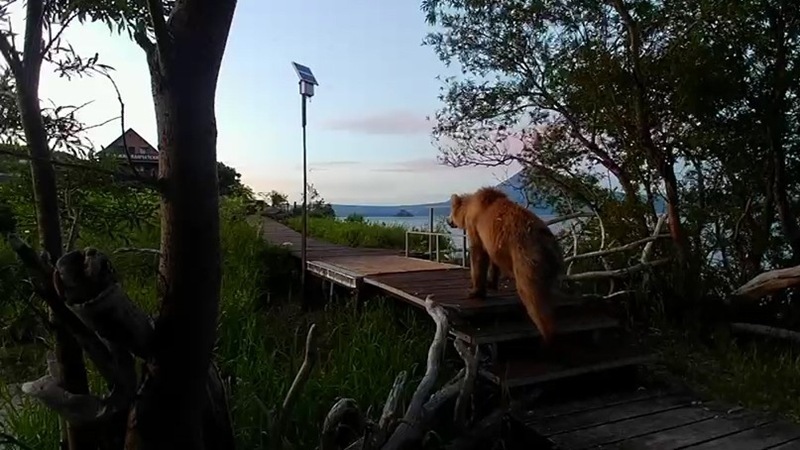A unique scientific experiment has started in the South Kamchatka Nature Reserve: employees of the Kronotsky Nature Reserve have started tracking the weight of wild bears in real time. The first results were impressive. A young bear named Glasha, who is only two and a half years old, gained seven kilograms in two and a half days, which indicates a successful start to the bait period.

A special weighing platform was installed at the Travyanoy cordon to implement the project. It is located right on the bear trail leading to the mouth of the Khakytsin River, one of the largest spawning grounds for sockeye salmon. Bears going fishing and back pass on a platform that can withstand a load of up to a ton. At the same time, the camera trap captures the animal, allowing scientists to identify each individual and compare it with the obtained weight data.
The aim of the study is to get a detailed idea of how the body weight of predators changes during the period of abundance of food. These data will help assess the impact of salmon abundance, the success of hunting specific bears, and the availability of plant foods on their health and readiness for hibernation. Observations of such well-known individuals as Glasha, which the inspectors know well, allow us to obtain particularly valuable personalized information.
“The scales for bears at the Travyanaya cordon have been connected, and the first weighing results have been obtained. On Friday, we learned the body weight of two bears: Glasha (85 kg) and another young bear (112 kg). And early this morning it turned out that Glasha had gained seven kilograms in two and a half days. And this is just the beginning. The equipment is currently being tested — everything is working fine so far,” said Liana Varavskaya, State Inspector of the Kronotsky State Nature Reserve.
The technical equipment of the project is constantly being improved. Recently, sensors specially designed to take into account the characteristics of the bear’s gait — “clubfoot” – were installed on the weighing platform. As explained by Oleg Tukalo, a specialist in power supply and communications systems, balancers have also been added to the platform to minimize vibration. The entire system operates autonomously thanks to the solar panel and transmits telemetry data remotely.
This project is being implemented jointly with the Young Scientists Club of the Kronotsky Nature Reserve, which makes it possible to involve the younger generation in real scientific work. In the future, it is planned to create server equipment for collecting and storing all the information that will be used for further research. This will open up new opportunities for studying the ecology of the Kamchatka brown bear and for involving young naturalists in environmental science.